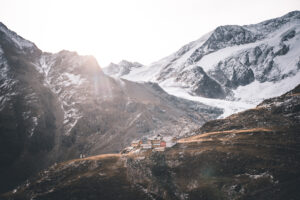Challenges in modeling of landslides and consequences hazards
Details
Full Title
Challenges in numerical and physical scale modeling of landslides and consequences hazards
Suggested by
Roshanak Shafieiganjeh
The respective workshop calls for contributions regarding ...
- What are the different types of on-site measurements or laboratory tests regarding the landslide dams modelling?
- How to gain insights into the internal composition of landslide dams.
- What are the most applicable numerical models/methods for analysing landslide dam failure processes?
- How to address and analyse the hydraulic hazards that this phenomenon poses to the mountain regions.
- How to deal with the uncertainties and shortage of data when analysing landslide dam stability.
Keywords
Landslide dams, Numerical modeling, Hazard assessment
Type
Workshop
Description
Landslide dams are naturally-formed blockages of watercourses caused by slope failures. They are mostly formed where narrow steep valleys are bordered by high rugged mountains. The lakes that form as the result of river blockage can pose significant hydraulic off-site risks upstream due to damming effects and downstream due to flooding. Landslide dams are remarkably diverse in their characteristics and longevity. They may last for several minutes or several thousand years depending on factors such as landslide volume, extent and shape, sorting of blockage material, rate of seepage through the material, and rate of sediment and water inflow. Landslide dams have been widely investigated based on their geomorphic characteristics; however, there is little research focused on the hydraulic and geotechnical aspects of this phenomenon. Due to this shortage, the internal structure of currently existing landslide dams remains mostly unknown to mountain hazard scientists. Hence, a multi-disciplinary attempt to model landslide dams would clarify many parameters and improve the assessment of this mountain hazard.
Format
This workshop is intended for PhD students interested and have experience in both geotechnical modeling and hydraulic hazard assessment of landslide dams. In this session, the participants based on modeling approaches and challenges have previously encountered,will address some significant matters such as the most practical numeric methods in modeling the internal structure of natural dams, the reliability of laboratory test to gain geotechnical parameters of the dam, the difficulties and solutions in modeling a three-phases environment, considerations in defining the boundary conditions of the numerical model, and the methods to predict the hazard natural dams pose toward their surroundings.


